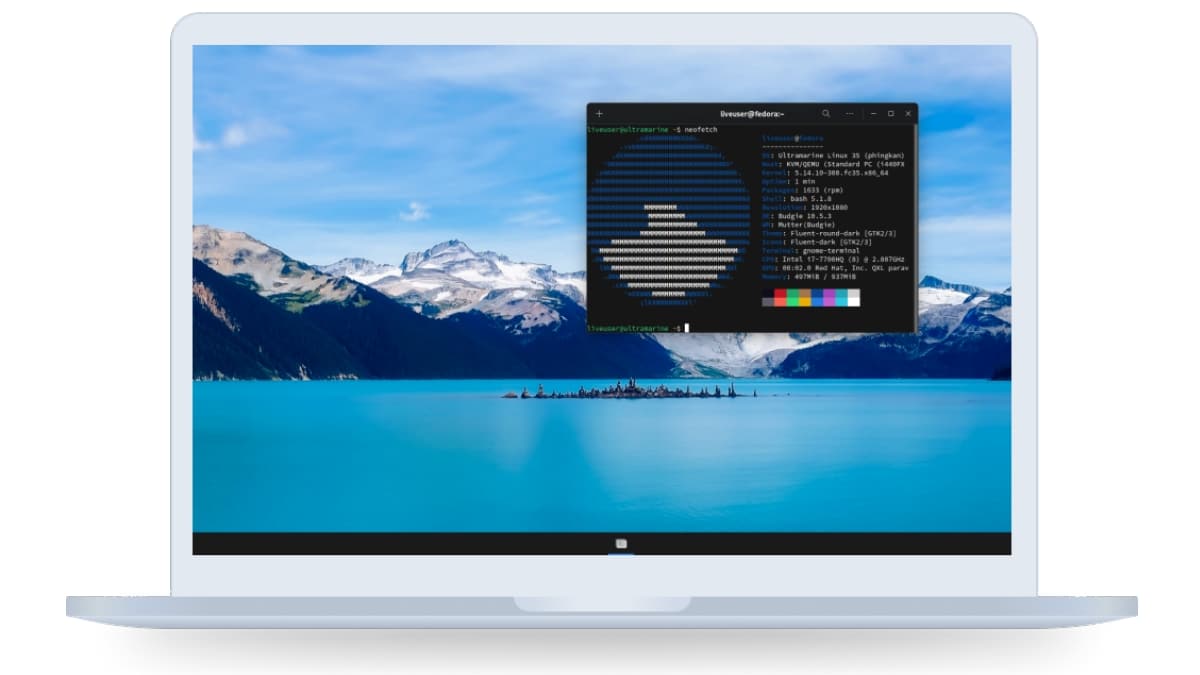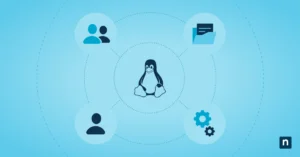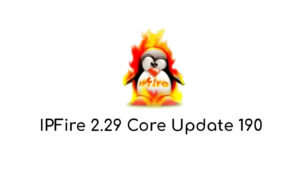Ultramarine Linux 38, codenamed “Tortuga”, has been released with several new features and improvements. One of the most notable changes is the return of codenames for releases. This is a feature that was dropped in Ultramarine Linux 37, but it has been brought back in response to popular demand. They codenamed this release Tortuga after the Dry Tortugas in Florida.

The return of codenames is a welcome change for many Ultramarine Linux users. It gives the releases a more distinctive identity and makes it easier to keep track of which version is which.
The other changes in Ultramarine Linux 38 are also welcome. Shorter shutdown times are always appreciated, and the improved Thai and Khmer support is a boon for users in those countries. The System76 Scheduler is a powerful tool for managing CPU resources, and GNOME 44 and KDE 5.25 are both significant releases with several new features. Let’s have a look at the details in this update.
Shorter shutdown times
Ultramarine Linux 38 offers a tweaked shutdown sequence where the services were limited for faster/shorter shutdown times. This means that when you shut down your computer, Ultramarine Linux will only stop the services that are essential for the shutdown process. This can result in significantly shorter shutdown times, especially on systems with a lot of services installed. In addition to the tweaked shutdown sequence, Ultramarine Linux 38 includes System76’s scheduler. This scheduler is designed to automatically detect the application that’s currently in use and then limit the number of services that are running in the background. This can also help to shorten shutdown times, as it will prevent unnecessary services from running during the shutdown process.
The combination of the tweaked shutdown sequence and System76’s scheduler can result in significant improvements in shutdown times on Ultramarine Linux 38. In some cases, shutdown times can be reduced by as much as 50%. This can be a welcome improvement for users who are looking for a faster and more responsive computing experience.
Improved Thai and Khmer support
Ultramarine Linux 38 has improved support for the Thai and Khmer languages. These improvements should make Ultramarine Linux more accessible to users who speak Thai or Khmer.
The Noto fonts for Thai and Khmer have been updated to the latest versions. These fonts are designed to be more accurate and legible, and they should improve the overall appearance of text in these languages. The support for Thai and Khmer keyboard layouts has been improved. This includes adding new layouts and fixing some bugs that were present in previous versions of Ultramarine Linux. The translations for many applications have been updated. This includes the desktop environment, web browser, and office suite. The new translations should make these applications more accessible to users who speak Thai or Khmer.
System 76 Scheduler
System76 Scheduler is a custom CPU scheduler developed by System76, the company behind the Pop!_OS Linux distribution. It prioritizes the processes that are already running in order to increase desktop responsiveness. All four editions of Ultramarine Linux 38 have System76 Scheduler, although only the GNOME edition will automatically identify the application that is presently open. You can manually choose which procedure to prioritize in the other editions.
The default scheduler in the Linux kernel is the foundation of System76 Scheduler, but significant changes have been made. For instance, it gives higher priority to tasks that intensively utilize the CPU as well as tasks that interact with the user interface.
In addition to improving desktop responsiveness, System76 Scheduler can also help to improve battery life. This is because it prioritizes processes that are actively being used, and it deprioritizes processes that are not being used.
GNOME 44

Ultramarine Linux 38 comes with GNOME 44, the latest version of the GNOME desktop environment. GNOME 44 includes a number of new features and improvements, including:
- Improved quick settings: The quick settings panel has been redesigned to be more user-friendly and efficient.
- New file picker: The file picker has been redesigned with a new layout and features.
- Support for Flatpak: Ultramarine Linux 38 now includes support for Flatpak, a new packaging format that makes it easier to install and update applications.
- Performance improvements: GNOME 44 has been optimized for performance, making it feel snappier and more responsive.

GNOME 44 also includes a number of bug fixes and other improvements. If you’re a user of Ultramarine Linux, you’ll definitely want to upgrade to GNOME 44 to take advantage of all these new features. Here are some of the specific changes that have been made to GNOME 44 in Ultramarine Linux 38:
- The quick settings panel has been redesigned to be more compact and easier to use.
- The file picker has been redesigned with a new layout and features, including a new preview pane and a new search bar.
- Support for Flatpak has been added, making it easier to install and update applications.
- Performance has been improved, making the desktop feel snappier and more responsive.
- A number of bug fixes have been made.
KDE 5.25
KDE Plasma 5.25 is the default desktop environment for Ultramarine Linux 38. It is a modern, user-friendly desktop environment that offers a wide range of features and customization options. Some of the new features in KDE Plasma 5.25 include:
- A new Activities Overview, which provides a more efficient way to switch between different activities.
- A new Notification System, which provides a more unified way to manage notifications.
- A new System Settings panel, which makes it easier to configure the desktop environment.
- A number of new widgets and animations.
KDE Plasma 5.25 also includes a number of bug fixes and performance improvements. And the combination of KDE Plasma 5.25 and Ultramarine Linux 38 provides a smooth and polished user experience. KDE Plasma 5.25 has a sleek and modern design that is both visually appealing and functional. It is highly customizable, so you can tailor it to your own needs and preferences. Also, it comes with a wide range of features, including a powerful file manager, a versatile text editor, and a comprehensive set of tools for managing your system. It is easy to use, even for beginners.
Wrapping Up
Ultramarine Linux 38 is a great choice for users who want a powerful and customizable desktop environment. It is a solid release that offers a number of improvements over previous versions. Ultramarine Linux devs even offer a script for those who want to convert their Fedora Linux installations to Ultramarine Linux. The devs promise rock-solid stability, developer-friendly tools, and a smooth, out-of-the-box Fedora Linux experience for all supported flavors. If you want to give Ultramarine Linux 38 a try on your personal computers, you can download the Budgie, GNOME, KDE Plasma, or Pantheon editions right now from the official website. All flavors are supported on both 64-bit and AArch64 (ARM64) architectures.










